There are not only many kinds of insects, but they also come in various shapes and strange habits. To survive in the vast nature, they must have various stakes with various creatures in nature. Some insects have "weapons" to fight with the enemy and can defend themselves; some insects are born without such "weapons", but they adapt their body shape and color to the surrounding environment during the long-term evolution process. Rely on the cover of the environment to preserve yourself. Insects are extremely adaptable and capable of escaping. They can use a variety of methods to protect themselves and survive.
Insects are a member of the biological group in nature, which inevitably leads to various relationships with other organisms in nature. Mimicry is when one animal imitates the form of another animal so that its good friends look similar to them, thus gaining the benefit of protecting itself from natural enemies in daily life. This is the result of different species of animals developing characteristics that are beneficial to themselves through natural selection.
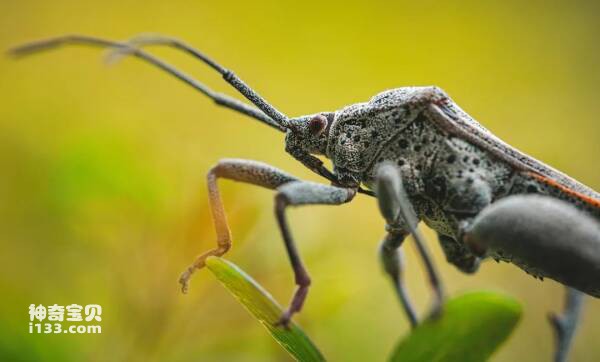
The concept of mimicry is based on the idea that certain species of insects are disgusting, palatable or inedible to birds and other predators, and that these species have conspicuous "warning" colors to alert predators Recognize and avoid them; other harmless but tasty insects adopt similar patterns for protection because predators mistake them for unpalatable species and fly away. The unpalatable butterflies are considered "models," while the palatable species are called "mimics."
It is easy to imagine that mimics are constantly perfected in the process of natural selection, so that sometimes they are so similar to the model that they can only be distinguished by careful examination of their sequence. The more similar the mimic is to the model, the easier it is for prey to mistake it for the model, and thus it is easier for the mimic to evade predators. In contrast, butterflies with poor mimicry will not be mistaken for models and will therefore be more susceptible to predation. Under this pressure, individuals with poor mimicry will gradually be eliminated, leaving only those types that are very similar to the model. Mimicry often extends to behavior, so that the simulator adopts the habits and flight behavior of the model species. Any simulator that does not match the model's behavior will be eliminated in the long-term process of natural selection. Only some butterflies that are difficult to swallow are eaten, and the rest of the butterflies are spared. If the butterfly population contains a high proportion of edible mimics, predators will have a greater chance of preying on them, so they will not be able to quickly identify warning colors and lose their due protection value.
Mimicry can usually be divided into two categories: 1. Batesian mimicry: In certain families of insects, there are a large number of inedible species that serve as models for Batesian mimicry. For example, the Butterfly family includes many species that are difficult to swallow and has therefore become a classic model for butterfly simulations in other families. Models and simulators must coexist in the same area and have the same habitat. Moreover, the model should always be richer than the simulator. This is because predators must have actual experience of disgust before they can recognize warning colors. In other words, only some insects that are difficult to swallow are eaten, and the rest of the insects are spared. If an insect population contains a high proportion of edible mimics, predators will have a greater chance of preying on them, so they will not be able to quickly identify warning colors and lose their due protective value. High proportions of imitators do not occur in the wild. Simulators are often few and far between and difficult to spot, while models can be abundant. One of the most striking examples of Batesian mimicry is the Papua swallowtail butterfly (Papilio laglaizei Depuiset). The model for this species is not another butterfly, but a diurnal moth (Alcidis agarthyrsus). They look very similar from the front and can only be distinguished from the reverse. This moth has a bright orange ventral abdomen, a feature not found in any species of the genus Papilio. The rabbit butterfly uses the same color spots on the hip fold area of the hind wings to achieve this purpose. When it is at rest, this part just covers the abdomen, forming an orange-yellow phenomenon.
The African swallowtail butterfly (Papilio dardanus Brown) has female polymorphism, thus showing a variety of interesting Batesian mimicry. The male butterfly is easy to identify, with black patterns on its creamy-yellow wings and a tail process on each hind wing. In some distribution areas (Ethiopia, Madagascar), female butterflies are very similar to male butterflies in color, pattern and shape. In other areas, most female butterflies have no tail process on their hind wings, and their shapes vary greatly, and they largely imitate the shapes of inedible species from other families. More than 100 polymorphic female species of African swallowtail butterflies are known. Batesian mimics occur in large numbers in the family Papilionidae.
2. Mueller's mimicry: This term is used to describe the phenomenon of different species that are both inedible having similar shapes. If two inedible insects occurring in the same area have the same sign or warning coloration, it would be beneficial to both. It is obvious that as long as a predator accidentally eats either of them, it can remember its unique warning color and avoid eating these two insects. In a given area, some insects must become victims before all local predator species have learned the warning colors of insects. If two insects have the same pattern, each species will lose approximately the same number of individuals. Evolutionary pressure created by predatory selection will favor convergent evolution until they become very similar. Of course this process will last for a long time. In some cases, mimics may have begun as a result of random mutation and survived because they were lucky enough to resemble other inedible species. Without fossil or other primitive evidence, this view cannot be confirmed.
Understanding the selection processes that produce simulated patterns can be accomplished by looking closely at how predators recognize warning colors and which features in the pattern are key. What needs to be studied is whether the predator recognizes the pattern on the entire wing surface, or only local features such as spots and bands, or the juxtaposition of certain colors.
Punit, a pioneer in the study of mimicry, pointed out that even if one type of mimesis is more abundant than another, they still benefit from a common pattern, and the rarer species will gain considerable benefits, as Same as Batesian mimicry.
imitation bamboo
There is a kind of insect that lives in the bamboo forest. It has the ability to vividly imitate the shape of bamboo branches and the green color of bamboo leaves, making it difficult for natural enemies to detect them. People gave this insect a very vivid name - stick insect.

Stick insects belong to the order Stick Insects. The head of the bamboo-like species is almost as wide as the body, and the slender and segmented body closely resembles a bamboo branch. The front feet are short, and the two pairs of slender middle and rear thorax are close to the sides of the body. The front feet often cling to the handle base of bamboo leaves, and the hind feet tightly grasp the bamboo joints. When it rests on a bamboo branch, it sometimes stretches out its middle and rear thorax, and shakes slightly from time to time, as if the bamboo branch is being blown by the breeze. There is a gap between the leg segment and the rotary segment of the stick insect's thorax, so it is easy for enemies to break off the limbs and fall off, but they can still regenerate after falling off. Stick insects are mostly wingless species or have saddle-shaped wing buds in the middle of the mesothorax and metathorax; tropical winged species have well-developed and soft front and rear wings. Stick insects are progressively metamorphosing insects with incomplete metamorphosis. The basic morphology, feeding habits and living environment of nymphs and adults are similar. It generally reproduces sexually, but parthenogenesis is also common. During sexual reproduction, the male and female mate instead of the male on top and the female on the bottom. Instead, the male and female tails are connected and the heads are in opposite directions, much like an extended bamboo branch. This is also consistent with their bamboo mimicry! There are also stick insects. The ability to protect itself with one hand: as long as the branch is slightly shaken, it will fall into the grass; it closes its chest and legs, pretends to be dead motionless, and then waits for an opportunity to sneak away.
Imitation leaf
There are many types of insects that imitate leaves, among which the famous ones are some species of the order Stick Insecta and the family Phytophthidae. Because they look like plant leaves when resting on plants, people usually call them leaf insects. The body of the leaf insect is flat, the female's forewings are developed and leaf-shaped, and the wing veins are obvious, much like the veins of plant leaves, and the hind wings are degenerated; the male's forewings are degenerated and the hind wings are developed. Their feet are wide and flat, especially the front and middle leg segments and tibia segments are flake-shaped. The body color is mostly green or brown, which is similar to the color of plant leaves in the living environment where it lives. Therefore, it is not easy to be discovered by natural enemies and animals, and it can escape from infringement. Adults of this type of insect are not good at flying and mostly live in tropical and subtropical areas. They can be collected from Fujian and Nansha Islands in my country.
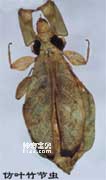
In the order Lepidoptera, the leaf moths of the family Nymphalidae and the leaf moths of the family Nymphalidae are also famous leaf mimicking insects. These two types of insects are able to imitate leaf mimicry to a wonderful degree. When it rests on the branch, it is really difficult to tell which one is the insect and which one is the leaf if you don't observe carefully.
Regarding the mimicry of the dead leaf butterfly, someone once wrote a poem to praise it: "The dead leaf butterfly looks like a leaf, but not a leaf. It appears, flies or rests; the tail of the hind wings is as protruding as a petiole, and the wings and the hidden head resemble a leaf. The color is like a dead leaf. The leaf pattern is like veins, which is a masterpiece of ingenuity; the surface of the wings flashes with blue, orange and yellow bands, and the sudden spread of wings scares the birds."
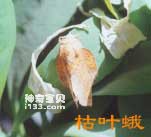
Dead leaf moths are withered yellow or orange-brown, and are generally medium-sized moths. When it rests on a dead branch, its wings cover the back of its abdomen like a roof. The top corner of the forewing is pointed, like the top of a dead leaf. There is a longitudinal vein (line) extending from the middle of the trailing edge of the forewing to the top corner of the forewing, just like the main vein of the leaf. The hind wings have serrated edges, with part of them protruding from under the forewings, much like the edges of dead leaves. When at rest, the shoulder angle and front line of the hind wings are prominent, resembling a dead leaf. A pair of lower lip barbels are juxtaposed and extend toward the front of the head, just like petioles leaving a branch. Some dead leaf moths also have markings formed by scales of different colors on their wings, like disease spots on dead leaves.
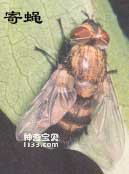
imitation
In spring and summer, when flowers are in full bloom, whether in the flower beds of the park or among the flowers in the fields, you will see many kinds of insects gathering together at the same time, and the flowers become a place for them to meet with each other. Bees, hoverflies, and parasitic flies are common examples of imitation. Coincidentally, although they are not brothers in the same family, they are not very distantly related in the insect family. Their body shapes and sizes are also similar, so they can only be considered small among the same species! The body color is also very similar, both are yellowish brown, and both belong to the category of mimicry. If you don't observe carefully or don't fully grasp their main characteristics, you may not be able to tell who they are.

Bees are common insects. It belongs to the order Hymenoptera, family Apidae. Its antennae are knee-shaped, its mouthparts are chewing and sucking, and its two pairs of membranous wings are connected by hooks to the front and rear wings on each side (don’t think it has only one wing on each side). Pink feet. Both hoverflies and parasitic flies belong to the order Diptera. They have only one pair of well-developed forewings, and the hind wings become balance rods. However, hoverflies belong to the family Syrphidae, with large wings and transverse veins parallel to the outer edge, so that the middle wing veins form a closed wing chamber. This is the main characteristic of hoverflies. Parasitoid flies belong to the family Parasitidae. They have a stout body and are covered with hair. There are many coarse hairs (brises), especially on the abdomen, there are rows of obvious marginal bristles, dorsal bristles and terminal bristles. There is an axillary flap at the base of the trailing edge of the wing. The scutellum behind the mesothorax is particularly developed and is exposed outside the small scutellum, forming a round protrusion, which is particularly obvious when viewed from the side. Based on these main characteristics, it is not difficult to distinguish these three types of frequent visitors who are similar to each other.
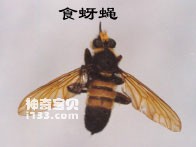
Imitation environment

many insectsIt can cleverly simulate the color of the environment and reduce the chance of being discovered. The color of soil locusts is like soil, and stick insects are like dead branches or green leaves. Even entomologists are sometimes fooled. "Melanization of the ruler moth" best illustrates the adaptability of insects. Before industrial society, the color of the ruler moth adapted to the environment was gray; but after the arrival of industrial society, environmental pollution gradually increased, and the body of the ruler moth gradually turned black. Look how cunning it is!
Imitation of poisonous insects
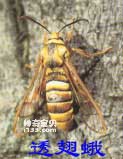
Some insects are poisonous, making predators avoid them. Therefore, some non-toxic insects will mimic the appearance and behavior of poisonous insects and thus be protected. Most spotted butterflies are poisonous, so they are often imitated by other butterflies. Look how much the female of the golden-spotted butterfly looks like the golden-spotted butterfly. Look at this transparent-winged moth, you wouldn’t think it was a wasp, would you?

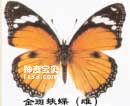
animal tags:
We created this article in conjunction with AI technology, then made sure it was fact-checked and edited by a Animals Top editor.